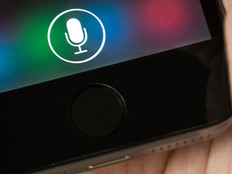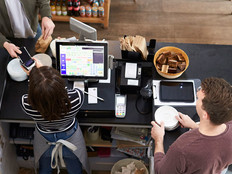Thanksgiving Browser Upgrade – BizTech Quick Take
Happy Thanksgiving: Pass the Internet Browser Upgrade
One of the most important tenets of Thanksgiving is giving thanks and giving to others. So after you chomp down on turkey and munch on some stuffing, do the IT world a favor and mosey on over to any desktop computer or notebook in the house and give the gift of an Internet browser upgrade.
Microsoft has made no secret of its intention to discontinue support for version 6 of its iconic web browser, Internet Explorer, and Sophos’ Naked Security blog’s Carole Theriault is sounding the trumpet for all IT-minded individuals to make the virtual world a better place.
It is time to stop enabling these users and get tough: If you want to stay on the Internet, update your browser. Now, let us look at the worst of the lot — Internet Explorer 6.
IE 6 MUST DIE
It is over 10 years old. That is the Middle Ages in web terms. Many web-based companies have stopped supporting it, including the three big boys: Google, Facebook and YouTube.
Even Microsoft has been desperate to kill it off for about a year, with its launch of IE 6 Countdown.
If you are wondering why you are doing this, remember it is the time of year for giving. You will be helping to make the Internet a better place and help [loved ones] from getting hit by something nasty.
Read more about Thanksgiving browser upgrades on the Naked Security blog.
Passwords Policies Your Business Can Use
Creating smart, secure and effective password policies is often a very easy first step that unfortunately gets glossed over in enterprise IT. Recently, a list of the 25 worst passwords of 2011 made the rounds on the web, and business IT is certainly not excused from some of these password faux pas.
Cisco’s Small Business blog has put together some useful pointers on password policies for businesses. One thing they advise is to make the passwords secure but also unique and memorable:
The trick is to come up with unique, secure passwords for all of the different devices, networks, and websites you log in to without creating a password management nightmare. The most secure password is a combination of at least 10 letters and numbers plus a special character, like a punctuation mark. Consider ”!blaz45sf3.” It’s secure, but difficult to remember.
Choose a phrase that you can remember but that won’t be easily guessed, then swap out some letters for numbers, misspell it, and add a special character. For example, “ILoveRedDogs” would become “1LuvR3adDawgs!”
This is an excellent password, but it should be used for only one login. However, it can be used as a base for additional passwords, so you don’t have to remember much more than your original password. For this to work, though, you need a repeatable system for pre-pending and post-pending the base password. You could bookend the base password with the first and last letters of each secure website, for instance, or you could add the type of device you’re logging into.
For example, if you’re going to set a password for your company’s Western Cargo online shipping account login, you’d start with ”1LuvR3adDawgs!,” then add ”W“ and ”O“ to create ”W1LuvR3adDawgs!O.” For your laptop login, you could use “Lap1LuvR3adDawgs!top.” Whatever you choose, the important things are that the base password is unique and not a real word, and your system for adding to the base is memorable and repeatable.
What password policies have you found useful in maintaining IT security for your organization?
Read more about passwords in the full post from Cisco’s Small Business blog.
A Larger-Sized Amazon Kindle Fire Is On Its Way
Many tablet enthusiasts were surprised when Amazon announced that its first tablet offering, the Amazon Kindle Fire, would boast a 7-inch screen. This is in contrast to Apple’s iPad, the current standard in tablet computing, and its 10-inch screen.
Rumors abounded that Amazon would offer a 10-inch version sometime next year, but GottaBeMobile reports that according to sources at Foxconn, a component maker for the Amazon Kindle Fire, the company is also working on an 8.9-inch version of the tablet.
Following the launch and much anticipated 7-inch Android-based Kindle Fire tablet, Amazon is still on track to release larger tablet versions as well. In a move mirroring that of Samsung, which has a Galaxy Tab 7.0, 7.7, 8.9, and 10.1 tablet, Amazon is looking to expand its tablet portfolio with different and varying display sizes, with potentially an 8.9-inch display next.
According to DigiTimes, which gets its information from various component makers and suppliers, Amazon has ordered 8.9-inch screens from LG Display and Samsung. The publication is reporting that Foxconn, which is building Apple’s iPhone and iPad, will be manufacturing Amazon’s 8.9-inch tablet in the middle of Q2 2012.
Read more information on future versions of Amazon’s Kindle Fire on GottaBeMobile.
7 Mobile Security Policies for Remote Workers
Remote workers benefit greatly from the enhanced access and flexibility that telework offers. But businesses can suffer security risks if the correct mobile security policies aren’t put in place to protect company data.
CloudTweaks has put together some useful tips on mobile security for remote workers that should prove useful. Read two of the pointers below:
Authentication
For years, you’ve heard the security community harping on about having secure passwords. It’s likely you are more than familiar with advice such as, no using the names of your children/pets, no birthdays/anniversaries, use a mixture of cases, use a mixture of numbers and letters, use odd characters (e.g., #!$*), have passwords expire every 30 – 90 days. You may have paid attention in the past and if you did, good for you because you now have one less thing to worry about.
If not, it’s imperative that you implement these policies with remote workers. Why? Because instead of just having to contend with people inside the company trying to guess other people’s passwords, you now have all the hackers on the Internet having a go. They have tools that can try 100,000 password combinations in less than a minute and nothing better to do. All it takes is one weak password on one user and suddenly they are in through your VPN. The person with the weak password (“bobby 21”) will not be the one who has to explain the breach — it will be the IT department.
One-time passwords
Strong passwords help secure your remote access massively, especially in conjunction with encryption. But they are not 100% effective against a determined/lucky hacker. Keystroke loggers, packet sniffers, phishing scams and social engineering attacks can all be used to get even the most complicated password. The only way to be sure is to use two-factor authentication (2FA) on your VPN. As the name suggests, 2FA uses two factors to authenticate users — something they have (key fob with a one-time, changing password) and something they know (a more traditional PIN). This means that even if your worker’s password is captured, it’s useless as soon as it has been seen.
Read the full list of mobile security pointers on CloudTweaks.
Turn Your iPad Into a Cash Register
Using tablets and smartphones to swipe credit cards has become an increasingly common trend among businesses. But now, Square, a company that manufactures software and peripherals that enable mobile devices to conduct POS transactions, is integrating cash and paper receipts into the mix.
Small Biz Go Mobile reports on the integration that enables companies to cater to both cash and credit customers on mobile devices:
That’s right, now you can use your iPad and the Square credit card reader to accept credit transactions as well as cater to those “cash-only” customers. Cash register integration also lets Square users print paper receipts as well. Let’s face it, some of your customers may not be all excited about technology, and as a result prefer the “old school.” With Square for the iPad, you can set up a cash drawer and receipt printer for the ultimate POS device.
Has your business turned to smartphones and tablets for POS transactions?
For more on Square’s receipt and cash integration, read the full post on Small Biz Go Mobile.
10 Tips for Managing SharePoint Better
Microsoft’s SharePoint has become a standard in business collaboration, but keeping your company’s SharePoint in good shape requires continuous maintenance and care.
Ramon Ray, editor of Smallbiztechnology.com, has pulled together 10 tips to help IT professionals who manage SharePoint to work more efficiently:
1. Plan, plan and plan some more
Planning for authentication, performance, capacity and future growth, either at the initial design phase or after deployment, is one of the most important exercises of building and maintaining SharePoint 2010. SharePoint is deceptively complex and lack of planning both in the initial stages as well as for the long term can cause pain points within service applications, storage and server resources that start small and become major headaches in the future.
2. Use site quota to maintain sustainable growth
This is one of the most underutilized features within SharePoint, yet it is critical to maintaining a properly functioning environment. SharePoint isn’t capable of self-managing the size of its database, and with users constantly adding new content, the data store will continue to the grow if you don’t impose defined limits. Quotas give you the opportunity to ask the right questions in order to keep the content stored in SharePoint relevant and fresh, while maintaining a supportable database. Always start with a small quota template (typically 1GB) and grow out from there.
3. When sizing, it’s more about overhead than content
SharePoint 2010 has a lot of additional services beyond the ability to store content within a list or library. These other services also consume storage and resources and need to be taken into consideration when sizing a SharePoint environment. Specifically, the Search, User Profiles, Web Analytics and Usage and Health Services can quickly create storage issues and pain points that will impact performance and perceived latency. Take the time to size SharePoint appropriately for the requirements of your environment.
Read more on the 10 tips for SharePoint management on smallbiztechnology.com.
Medicine Goes Virtual with Video Conferencing
What if your doctor could treat you from Texas, as you lie in a clinic in North Carolina? With video conferencing, doctors are exploring the possibilities of telemedicine, which enables them to practice medicine remotely.
In a story for BizTech, Gary Merritt, director of technology for the Seattle Science Foundation, talks about his organization’s experience with integrating video conferencing and medicine.
“We have live surgery here in our video conferencing room and also broadcast out to places like Duke University, where we have a doctor on the other end,” Merritt says. “The quality of the video conferencing equipment lets him talk to the doctor in the operating room. They can talk back and forth while doing the surgery, and he never has to fly here and book a hotel.”
Read his comments and more in this story from BizTech.







